 Search by Keyword
Sign Up Below for our MONTHLY BEATLES TRIVIA QUIZ!
|
"ANY TIME AT ALL"
(John Lennon - Paul McCartney)
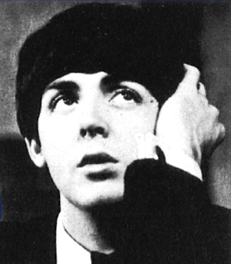 In June of 1964, when an interviewer asked The Beatles how much time they take to rehearse newly written songs, Paul responded: "Normally, with new numbers, we don't rehearse them until we record them." George Harrison elaborated on this in another interview shortly afterward: "Paul and John write a song, bring it into the studio and usually, nine times out of ten, Ringo and I haven't heard the song before, and we get into the studio and try all different arrangements. We all stick little bits here and there, you know." In June of 1964, when an interviewer asked The Beatles how much time they take to rehearse newly written songs, Paul responded: "Normally, with new numbers, we don't rehearse them until we record them." George Harrison elaborated on this in another interview shortly afterward: "Paul and John write a song, bring it into the studio and usually, nine times out of ten, Ringo and I haven't heard the song before, and we get into the studio and try all different arrangements. We all stick little bits here and there, you know."
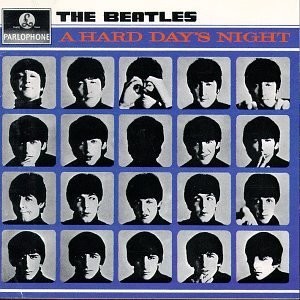 Such was definitely the case with John Lennon's "Any Time At All." In fact, the writing of this contribution to the second side of the "A Hard Day's Night" album wasn't even finished when it was introduced to the group in the studio. Such was the climate of The Beatles' hectic schedule of 1964. After all, there were concerts to perform, movies to make, interview appointments to keep, radio shows to record and TV shows to film, not to mention recording deadlines to fill. The Beatles became forced to show up in the recording studio with half-finished songs and proceed to complete them with the red light on. Such was definitely the case with John Lennon's "Any Time At All." In fact, the writing of this contribution to the second side of the "A Hard Day's Night" album wasn't even finished when it was introduced to the group in the studio. Such was the climate of The Beatles' hectic schedule of 1964. After all, there were concerts to perform, movies to make, interview appointments to keep, radio shows to record and TV shows to film, not to mention recording deadlines to fill. The Beatles became forced to show up in the recording studio with half-finished songs and proceed to complete them with the red light on.
Amazingly, out of such a tense atmosphere would come a melodic and vigorous track that nicely finds its place as a complimentary song on their soundtrack album. With "Any Time At All," The Beatles show that they can indeed work well under pressure.
Songwriting History
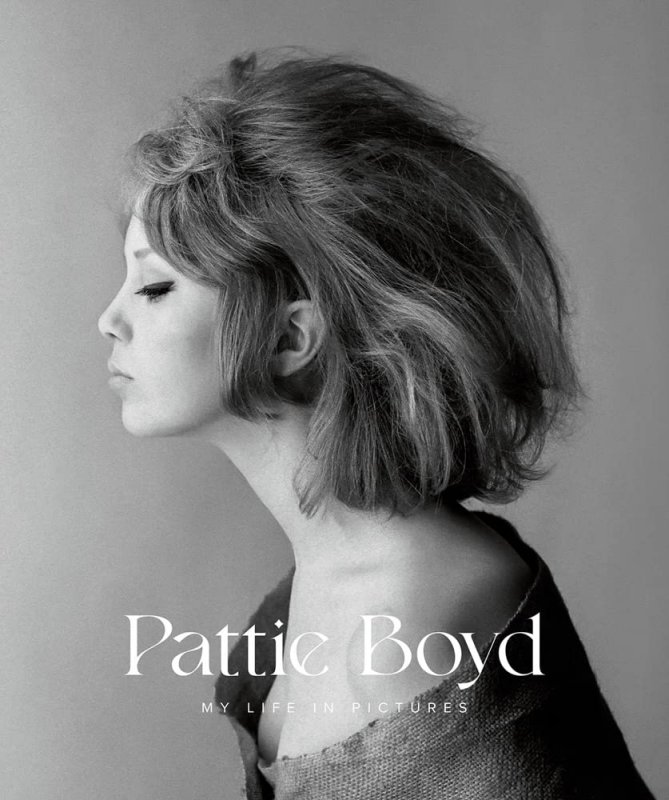 Although there is no verification of a timeline, it is easy to estimate that "Any Time At All" was written sometime in May of 1964. John and his wife Cynthia, along with George Harrison and his new girlfriend Pattie Boyd (whom he had just met on the set of "A Hard Day's Night") spent nearly this entire month on vacation in Tahiti. Since the song first materialized in the recording studio on June 2nd, 1964, and there was no evidence of its existence before that time, it can be assumed that John fleshed it out during this trip. After all, pictures exist of him playing an acoustic guitar on this vacation. I'm convinced, anyway. Although there is no verification of a timeline, it is easy to estimate that "Any Time At All" was written sometime in May of 1964. John and his wife Cynthia, along with George Harrison and his new girlfriend Pattie Boyd (whom he had just met on the set of "A Hard Day's Night") spent nearly this entire month on vacation in Tahiti. Since the song first materialized in the recording studio on June 2nd, 1964, and there was no evidence of its existence before that time, it can be assumed that John fleshed it out during this trip. After all, pictures exist of him playing an acoustic guitar on this vacation. I'm convinced, anyway.
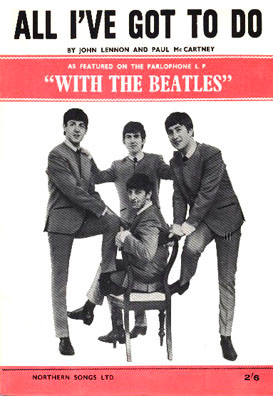 Lennon described the song in 1980 by saying: "An effort in writing 'It Won't Be Long' - same ilk. C to A minor, C to A minor with me shouting." While it resembles this song musically, lyrically it was a re-write of his "With The Beatles" track "All I've Got To Do." Lennon described the song in 1980 by saying: "An effort in writing 'It Won't Be Long' - same ilk. C to A minor, C to A minor with me shouting." While it resembles this song musically, lyrically it was a re-write of his "With The Beatles" track "All I've Got To Do."
While both John and Paul have claimed that "Any Time At All" was written completely by Lennon, the evidence may very well suggest otherwise. This can be suggested because of the circumstances regarding the recording session for the song. While in the studio, they recorded seven takes but were then convinced that it needed something more. They proceeded with recording other songs and, during a 90 minute break, came up with an instrumental section for the song. This section is highlighted by an intricate passage on piano which is played by Paul. This may very well indicate that McCartney had at least a slight hand in the composition.
Recording History
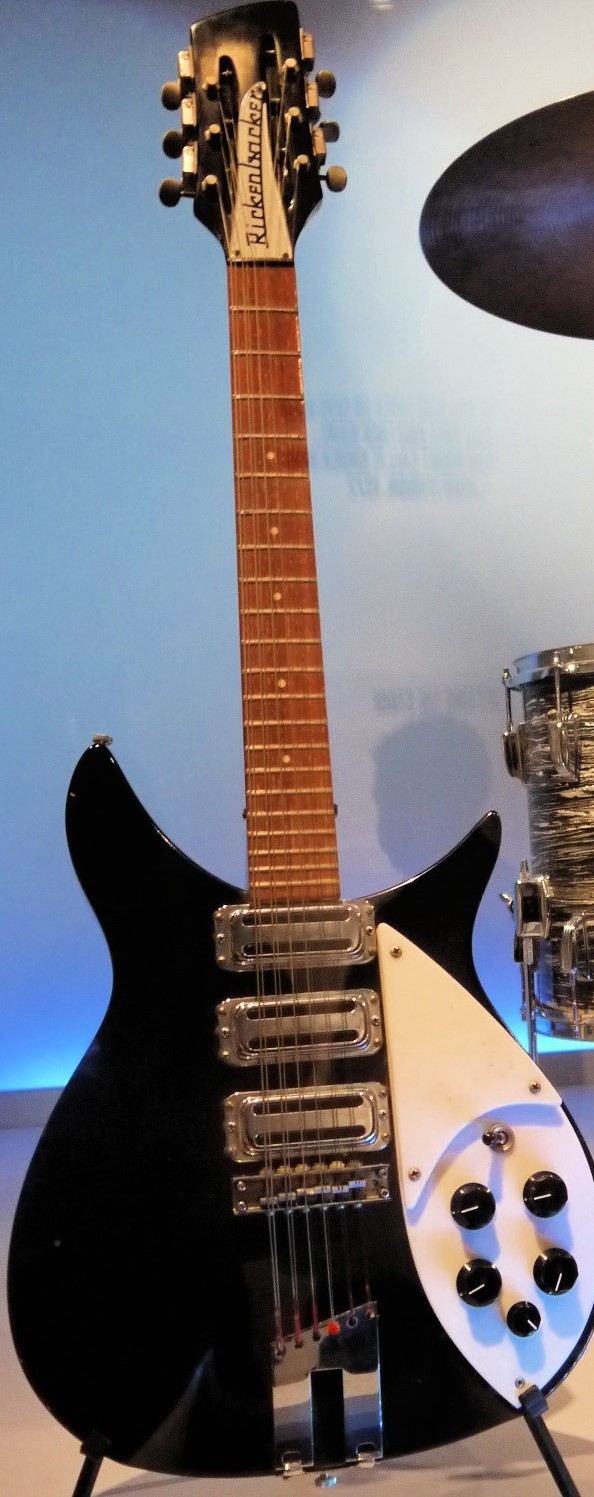 The Beatles entered EMI Studio Two on June 2nd, 1964 for starting work on the last three songs needed for the British "A Hard Day's Night" album. The first session began at 2:30 pm with "Any Time At All" being first on the agenda. Seven takes were recorded of the song with full band instrumentation (guitars, bass and drums) as well as John belting out lead vocals. The only problem was that the song itself needed some fine tuning. Sensing this, they temporarily shelved it and instead focused attention on Paul's "Things We Said Today," which was virtually complete by 5:30 that day. The Beatles entered EMI Studio Two on June 2nd, 1964 for starting work on the last three songs needed for the British "A Hard Day's Night" album. The first session began at 2:30 pm with "Any Time At All" being first on the agenda. Seven takes were recorded of the song with full band instrumentation (guitars, bass and drums) as well as John belting out lead vocals. The only problem was that the song itself needed some fine tuning. Sensing this, they temporarily shelved it and instead focused attention on Paul's "Things We Said Today," which was virtually complete by 5:30 that day.
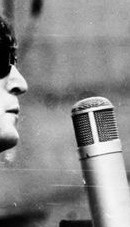 Between then and the time that the evening session began at 7 pm, John and Paul worked out what they thought was lacking on "Any Time At All," which appeared to be the instrumental section of the song. When the evening session began, they first recorded John's "When I Get Home" in its entirety and then returned to "Any Time At All" to begin fresh. Starting approximately at 9 pm, they ran through four more basic tracks with full instrumentation and John's vocals. The last one, "take 11," was viewed as best. Between then and the time that the evening session began at 7 pm, John and Paul worked out what they thought was lacking on "Any Time At All," which appeared to be the instrumental section of the song. When the evening session began, they first recorded John's "When I Get Home" in its entirety and then returned to "Any Time At All" to begin fresh. Starting approximately at 9 pm, they ran through four more basic tracks with full instrumentation and John's vocals. The last one, "take 11," was viewed as best.
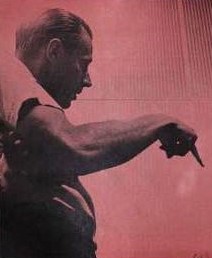 Double-tracking John's vocal was not an afterthought, as may have been the case with other songs. As probably noticed by George Martin, they realized that, going from the sixth to the seventh measure of each verse, there wasn't enough time for John to end one phrase and begin the next without it sounding awkward. To make it work, John would omit the first few words of the second phrase, knowing he'd fill in the gaps when he overdubbed his vocals. For instance, on the rhythm track of the second verse, he would sing "there is nothing I won't do...shoulder to cry on." Then when the overdub was recorded, he started with the line "when you need a..." to create the full picture. (This same trick was repeated on "Julia" from the "White Album.") Double-tracking John's vocal was not an afterthought, as may have been the case with other songs. As probably noticed by George Martin, they realized that, going from the sixth to the seventh measure of each verse, there wasn't enough time for John to end one phrase and begin the next without it sounding awkward. To make it work, John would omit the first few words of the second phrase, knowing he'd fill in the gaps when he overdubbed his vocals. For instance, on the rhythm track of the second verse, he would sing "there is nothing I won't do...shoulder to cry on." Then when the overdub was recorded, he started with the line "when you need a..." to create the full picture. (This same trick was repeated on "Julia" from the "White Album.")
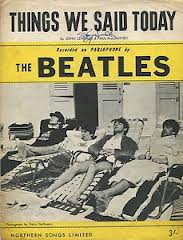 After both John and Paul's vocals were overdubbed, Paul added piano in the verses and instrumental section as overdubs and John added two final chord strums at the end of the song as an overdub. By 10:00 pm, the recording session was complete. After both John and Paul's vocals were overdubbed, Paul added piano in the verses and instrumental section as overdubs and John added two final chord strums at the end of the song as an overdub. By 10:00 pm, the recording session was complete.
Documentation exists that suggests John, Paul and George were present again around 9:30 pm the following day, June 3rd, 1964, to perform overdubs for both "Any Time At All" and "Things We Said Today." Although we don't know which of the overdubs mentioned above were performed at this time, this appears to be the final recording session used to complete these songs as well as the "A Hard Day's Night" album.
The first mono mix of "Any Time At All" was made on June 4th, 1964 by George Martin and engineers Norman Smith and Richard Langham, although this mix was never released.
 Both the released mono and stereo mixes of the song were made in a marathon mixing session held on June 22nd in the EMI Studio One control room by George Martin, Norman Smith and 2nd engineer Geoff Emerick. Actually, two released mono mixes were done on this day, the first for Britain and the second for America. The US mix has the piano overdub and the crashing drum beat before the choruses rather low in the mix, while in the UK mix it is noticeably louder. The stereo mix, which was released worldwide, has the piano at quite a high volume as well. Both the released mono and stereo mixes of the song were made in a marathon mixing session held on June 22nd in the EMI Studio One control room by George Martin, Norman Smith and 2nd engineer Geoff Emerick. Actually, two released mono mixes were done on this day, the first for Britain and the second for America. The US mix has the piano overdub and the crashing drum beat before the choruses rather low in the mix, while in the UK mix it is noticeably louder. The stereo mix, which was released worldwide, has the piano at quite a high volume as well.
Song Structure and Style
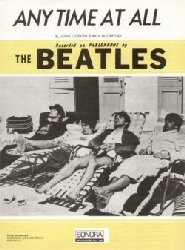 Lennon here deviates from the verse-heavy format of most of the early Beatles catalog to work with a chorus structure as evidenced periodically up to this point, such as in "It Won't Be Long." The structure of "Any Time At All" alters that pattern somewhat by introducing the instrumental passage (or bridge) quite late in the proceedings, thus amounting to a 'chorus/ verse/ chorus/ verse/ chorus/ bridge/ chorus' pattern (or ababaca). As to song structure, it's quite predictable for The Beatles to be unpredictable. Lennon here deviates from the verse-heavy format of most of the early Beatles catalog to work with a chorus structure as evidenced periodically up to this point, such as in "It Won't Be Long." The structure of "Any Time At All" alters that pattern somewhat by introducing the instrumental passage (or bridge) quite late in the proceedings, thus amounting to a 'chorus/ verse/ chorus/ verse/ chorus/ bridge/ chorus' pattern (or ababaca). As to song structure, it's quite predictable for The Beatles to be unpredictable.
The first eight-measure chorus begins, as they all do, with Ringo's car-door-slam drum accent, which signals John to begin the vocals unaccompanied by any instrumental backing. The band kicks in on the actual one-beat of the first measure, but not in the home key of the song. The home key doesn't appear until a three note accented band-fill occurs, which is played by George, Paul and Ringo. The title of the song is also driven home by being repeated three times in each chorus, the second time by Paul only because John couldn't hit those high notes. And with four choruses in this song, there is no doubt as to the identity of the title.
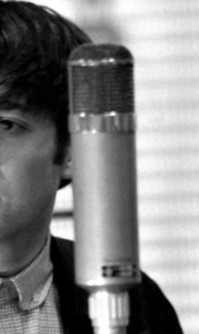 From the high-pitched shouting/singing of the chorus, John lowers the pitch a full octave for the verses, which is said to be the hallmark of a well-written song. This way, the chorus is anticipated and stands out as the primary focus of the song. Paul's piano first appears in this verse, which is played in lower tones only on the one-beat of each measure with a chord change. From the high-pitched shouting/singing of the chorus, John lowers the pitch a full octave for the verses, which is said to be the hallmark of a well-written song. This way, the chorus is anticipated and stands out as the primary focus of the song. Paul's piano first appears in this verse, which is played in lower tones only on the one-beat of each measure with a chord change.
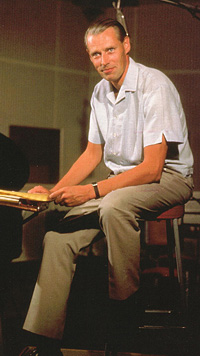 Interestingly, the verses are fourteen measures long but are made up of two melody lines repeated twice. For the sake of continuity, both melody lines would normally be eight measures long, but the last two measures of the first line are chopped off to meld them both together. While this makes for a somewhat rushed and awkward vocal delivery (hence the vocal overdubbing mentioned earlier), it creates a comfortable chord flow throughout the verse. This was smart thinking on The Beatles' and George Martin's part. Interestingly, the verses are fourteen measures long but are made up of two melody lines repeated twice. For the sake of continuity, both melody lines would normally be eight measures long, but the last two measures of the first line are chopped off to meld them both together. While this makes for a somewhat rushed and awkward vocal delivery (hence the vocal overdubbing mentioned earlier), it creates a comfortable chord flow throughout the verse. This was smart thinking on The Beatles' and George Martin's part.
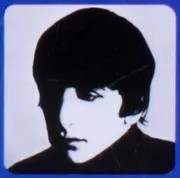 After another car-door-slam from Ringo and trademark "Beatles break," John ushers in another chorus. This time, though, Ringo and George don't seem to be on their game. Ringo forgets to play the accented band-fill with Paul and George, but I guess we can forgive him. This was his last day with the group before going into the hospital with tonsillitis. "It was miserable," Ringo remembers. "My throat was so sore, and I was trying to live on jelly and ice-cream. I was a smoker in those days, too. That was pretty rough." After another car-door-slam from Ringo and trademark "Beatles break," John ushers in another chorus. This time, though, Ringo and George don't seem to be on their game. Ringo forgets to play the accented band-fill with Paul and George, but I guess we can forgive him. This was his last day with the group before going into the hospital with tonsillitis. "It was miserable," Ringo remembers. "My throat was so sore, and I was trying to live on jelly and ice-cream. I was a smoker in those days, too. That was pretty rough."
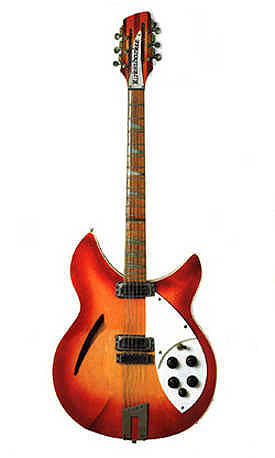 George flubbed the final guitar phrase in this chorus also. This was due probably to him just learning the song that day and it being near 10 pm after a long and productive day. These mistakes could easily have been corrected but were either not noticed or let go because of time constraints. George flubbed the final guitar phrase in this chorus also. This was due probably to him just learning the song that day and it being near 10 pm after a long and productive day. These mistakes could easily have been corrected but were either not noticed or let go because of time constraints.
After another verse, which was identical structurally and musically, we repeat the chorus again and this time everybody plays everything correctly. We then enter the bridge (or instrumental section), which consists of an interplay between George on guitar and Paul on piano. While they run concurrently and in triplets throughout most of this ten-measure section, George falls back during the final two measures to let Paul play the main guitar riff of the song on piano.
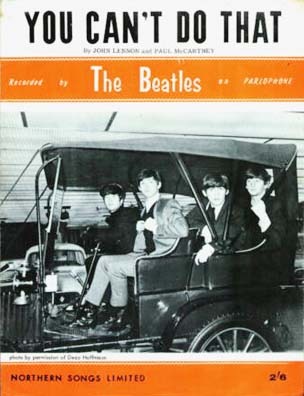 Another interesting thing about this instrumental section, which was the part of the song written on this day, was that it does not follow the chord sequence of any element of the song heard thus far. While the usual formula would consist of an instrumental passage, such as a guitar solo, played over the verse structure (as in "You Can't Do That") or even the bridge structure (as the harmonica solo in "Love Me Do"), the chord structure and melody line of this instrumental section is unique and is only heard once in the song. Another interesting thing about this instrumental section, which was the part of the song written on this day, was that it does not follow the chord sequence of any element of the song heard thus far. While the usual formula would consist of an instrumental passage, such as a guitar solo, played over the verse structure (as in "You Can't Do That") or even the bridge structure (as the harmonica solo in "Love Me Do"), the chord structure and melody line of this instrumental section is unique and is only heard once in the song.
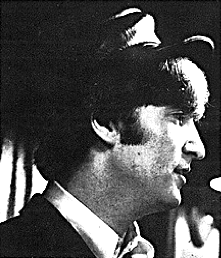 This segues nicely into a final repeat of the chorus, which is extended to twelve measures by repeating the second half of the chorus at the end, which John must have momentarily forgot about during his vocal overdubbing since he flubbed it in the eighth measure. This suitably concludes the song with a satisfying and resolving chord strum from John. This segues nicely into a final repeat of the chorus, which is extended to twelve measures by repeating the second half of the chorus at the end, which John must have momentarily forgot about during his vocal overdubbing since he flubbed it in the eighth measure. This suitably concludes the song with a satisfying and resolving chord strum from John.
As mentioned above, "Any Time At All" is a lyrical repeat of his 1963 song "All I've Got To Do," which consists of the overall plea for his girl to call whenever she needs him. Whether she needs "somebody to love," "a shoulder to cry on" or even "if the sun has faded away," John will cure whatever ails her. We don't need to look any deeper than the obvious. Just a simple formula song with a universal message.
"Shouting" is how John himself described his singing on this song, which accurately depicts his vocals on each chorus. This comes across convincingly as a plea for his girl to rely on him, while his subdued tone in the verses underscores the assurance of his reliability.
 As all three of the other Beatles just learned the song on this day, their performance shows their adaptability and professionalism. Paul's bass playing, while basically following the chord changes rudimentarily, does the song more justice than the busy runs he was known for even back then. His piano work and vocal delivery also underscore the point that Paul could be counted on "in the clutch." An ailing Ringo also came through, providing the basic backbeat throughout, accented by his car-door-slams and band-fill accents. George also made his mark by quickly adapting to his "lead guitarist" role with melodic guitar lines played to perfection. Well, most times at least. As all three of the other Beatles just learned the song on this day, their performance shows their adaptability and professionalism. Paul's bass playing, while basically following the chord changes rudimentarily, does the song more justice than the busy runs he was known for even back then. His piano work and vocal delivery also underscore the point that Paul could be counted on "in the clutch." An ailing Ringo also came through, providing the basic backbeat throughout, accented by his car-door-slams and band-fill accents. George also made his mark by quickly adapting to his "lead guitarist" role with melodic guitar lines played to perfection. Well, most times at least.
 Capitol's "Something New" album
|
American Releases
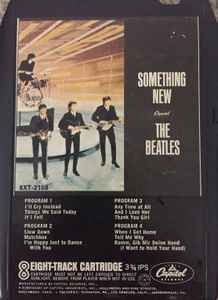 "Any Time At All" fits the description of "album track" perfectly, as it basically is only available on an album either in the US or UK. It was deemed a strong enough track to land as the opening song on side two of the British "A Hard Day's Night" album, but in America it wound up as the third song on side one of Capitol's "Something New" album. Released on July 20th, 1964, the album peaked at #2 on the Billboard album chart (just under the soundtrack album for "A Hard Day's Night"), and sold over two million copies. This album got its compact disc release on January 21st, 2014, both the mono and stereo versions of the album being contained on a single CD. "Any Time At All" fits the description of "album track" perfectly, as it basically is only available on an album either in the US or UK. It was deemed a strong enough track to land as the opening song on side two of the British "A Hard Day's Night" album, but in America it wound up as the third song on side one of Capitol's "Something New" album. Released on July 20th, 1964, the album peaked at #2 on the Billboard album chart (just under the soundtrack album for "A Hard Day's Night"), and sold over two million copies. This album got its compact disc release on January 21st, 2014, both the mono and stereo versions of the album being contained on a single CD.
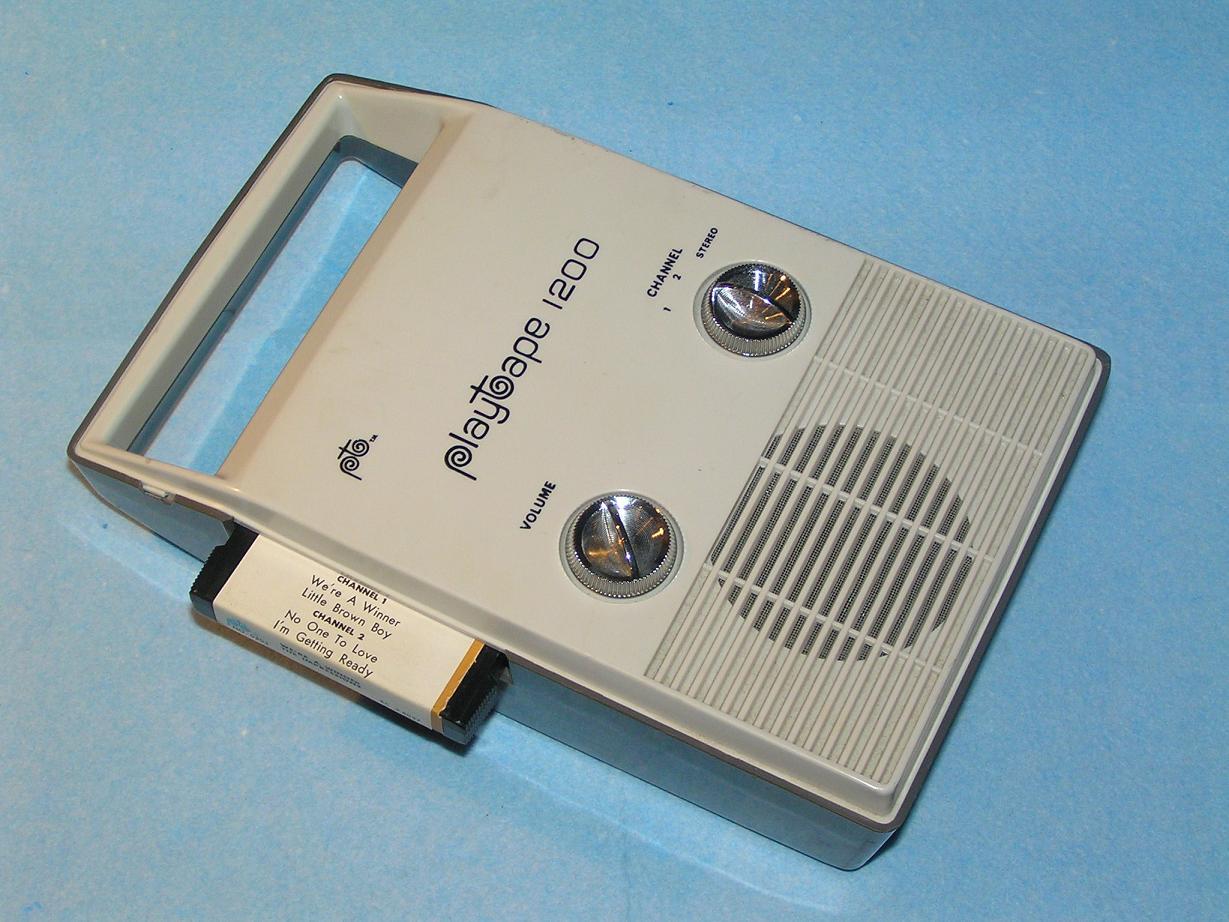 Sometime in 1967, Capitol released Beatles music on a brand new but short-lived format called "Playtapes." These tape cartridges did not have the capability to include entire albums, so a truncated four-song version of "Something New" was released in this portable format, "Any Time At All" being one of these songs. These "Playtapes" are highly collectable today. Sometime in 1967, Capitol released Beatles music on a brand new but short-lived format called "Playtapes." These tape cartridges did not have the capability to include entire albums, so a truncated four-song version of "Something New" was released in this portable format, "Any Time At All" being one of these songs. These "Playtapes" are highly collectable today.
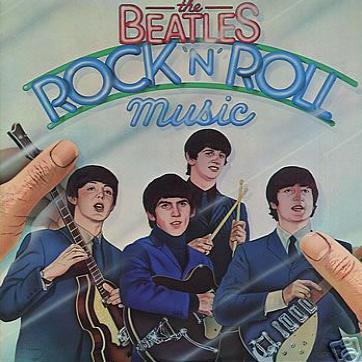 Although not intended as a full-out rocker, it was heavy enough to make the cut for Capitol's "Rock 'n' Roll Music" double album. Released on June 7th, 1976, this album also peaked at #2 on the Billboard album chart, this time not being able to pass the Paul McCartney and Wings album "Speed Of Sound" in the top spot. George Martin was consulted regarding the preparation of this album and, with access to only the Capitol mixes, decided it was necessary to reverse the right and left channels of the original stereo mix of this song for this album, boosting the overall bass to give it a fuller sound. Although not intended as a full-out rocker, it was heavy enough to make the cut for Capitol's "Rock 'n' Roll Music" double album. Released on June 7th, 1976, this album also peaked at #2 on the Billboard album chart, this time not being able to pass the Paul McCartney and Wings album "Speed Of Sound" in the top spot. George Martin was consulted regarding the preparation of this album and, with access to only the Capitol mixes, decided it was necessary to reverse the right and left channels of the original stereo mix of this song for this album, boosting the overall bass to give it a fuller sound.
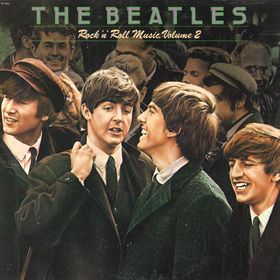 After the album had peaked, Capitol kept the album alive by cutting it in half and releasing each album individually on October 27th, 1980. "Rock 'n' Roll Music, Volume 2" contained the song as the second song of side one. After the album had peaked, Capitol kept the album alive by cutting it in half and releasing each album individually on October 27th, 1980. "Rock 'n' Roll Music, Volume 2" contained the song as the second song of side one.
The first time the original British "A Hard Day's Night" album was made available in the US was the "Original Master Recording" vinyl edition released through Mobile Fidelity Sound Lab in February of 1987. This album included "Any Time At All" and was prepared utilizing half-speed mastering technology from the original master tape on loan from EMI. This version of the album was only available for a short time and is quite collectible today.
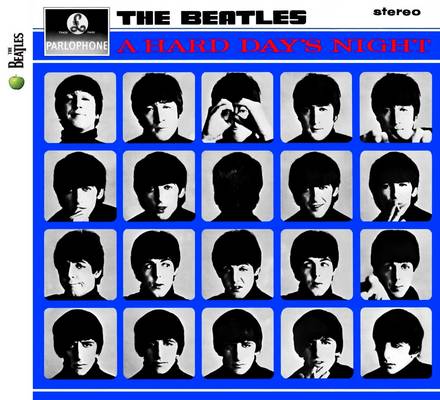 February 26th, 1987 was the date that the British "A Hard Day's Night" album finally saw release in the US in the compact disc format, the vinyl edition coming out on July 21st, 1987. While this album was mono only, the stereo edition came out on the remastered CD release on September 9th, 2009, the vinyl edition coming out on November 13th, 2012. February 26th, 1987 was the date that the British "A Hard Day's Night" album finally saw release in the US in the compact disc format, the vinyl edition coming out on July 21st, 1987. While this album was mono only, the stereo edition came out on the remastered CD release on September 9th, 2009, the vinyl edition coming out on November 13th, 2012.
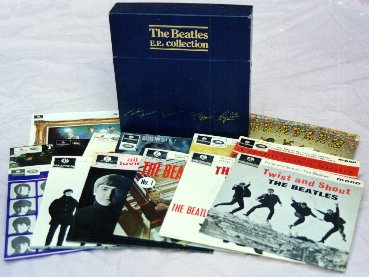 An interesting compact disc box set was released on June 30th, 1992 in the US by Capitol entitled "Compact Disc EP Collection." The mono mix of "Any Time At All" was included because of its being on the original British EP "Extracts From the Album A Hard Day's Night," which was released on November 6th, 1964, and hit #8 on the British charts. An interesting compact disc box set was released on June 30th, 1992 in the US by Capitol entitled "Compact Disc EP Collection." The mono mix of "Any Time At All" was included because of its being on the original British EP "Extracts From the Album A Hard Day's Night," which was released on November 6th, 1964, and hit #8 on the British charts.
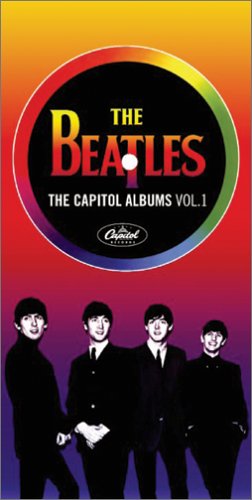 The box set "The Capitol Albums, Vol. 1" (released November 15th, 2004) contains both the stereo and mono versions of the song as first heard on "Something New." The box set "The Capitol Albums, Vol. 1" (released November 15th, 2004) contains both the stereo and mono versions of the song as first heard on "Something New."
On September 9th, 2009, the CD box set "The Beatles In Mono" was released featuring the stunning remastered mono version of "Any Time At All. The vinyl edition was released on September 9th, 2014.
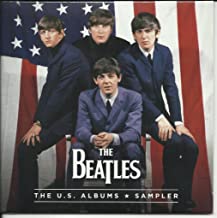 In promotion of the 2014 box set "The US Albums," a 25-song sampler CD was manufactured for limited release on January 21st, 2014, this containing the mono mix of "Any Time At All." In promotion of the 2014 box set "The US Albums," a 25-song sampler CD was manufactured for limited release on January 21st, 2014, this containing the mono mix of "Any Time At All."
Live Performances
 When The Beatles put the finishing touches on the song in EMI Studio Two on June 3rd, 1964, that was the last time they ever touched the song. John's songwriting was growing by "leaps and bounds" towards the end of 1964 and a song like "Any Time At All,' which was made up of pure sentimentality, was very easily left by the wayside. Not even a single BBC performance was made of the song. When The Beatles put the finishing touches on the song in EMI Studio Two on June 3rd, 1964, that was the last time they ever touched the song. John's songwriting was growing by "leaps and bounds" towards the end of 1964 and a song like "Any Time At All,' which was made up of pure sentimentality, was very easily left by the wayside. Not even a single BBC performance was made of the song.
Conclusion
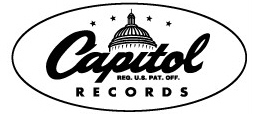 Although admitted by its authors to be re-workings of previous songs, this fact doesn't diminish its credibility among Beatles enthusiasts. Once found, this gem is respected as an example of Lennon and McCartney's ability to churn out sincere pop standards at the drop of a hat. Why Capitol Records didn't resort to "Any Time At All" for a single (instead of "Matchbox" for instance) is somewhat inexcusable. Maybe this was just a filler song, but it stands alone on its own merits as a potential hit. Although admitted by its authors to be re-workings of previous songs, this fact doesn't diminish its credibility among Beatles enthusiasts. Once found, this gem is respected as an example of Lennon and McCartney's ability to churn out sincere pop standards at the drop of a hat. Why Capitol Records didn't resort to "Any Time At All" for a single (instead of "Matchbox" for instance) is somewhat inexcusable. Maybe this was just a filler song, but it stands alone on its own merits as a potential hit.
Song Summary
"Any Time At All"
Written by: John Lennon / Paul McCartney
-
Song Written: May 1964
-
Song Recorded: June 2 and 3, 1964
-
First US Release Date:July 20, 1964
-
-
US Single Release: n/a
-
Highest Chart Position: n/a
-
-
Length: 2:13
-
Key: D major
-
Producer: George Martin
-
Engineers: Norman Smith, Ken Scott
Instrumentation (most likely):
-
John Lennon - Lead Vocals, Rhythm Guitar (1964 Ramirez A-1 Segovia, 1964 Rickenbacker 325)
-
Paul McCartney - Vocals, Bass Guitar (1963 Hofner 500/1), Piano (1905 Steinway Vertegrand upright)
-
George Harrison - Lead Guitar (1963 Rickenbacker 360-12 Fire-glo)
-
Ringo Starr - Drums (1964 Ludwig Super Classic Black Oyster Pearl)
Written and compiled by Dave Rybaczewski
|
IF YOU WOULD LIKE TO MAKE A DONATION TO KEEP THIS WEBSITE UP AND RUNNING, PLEASE CLICK BELOW!
|